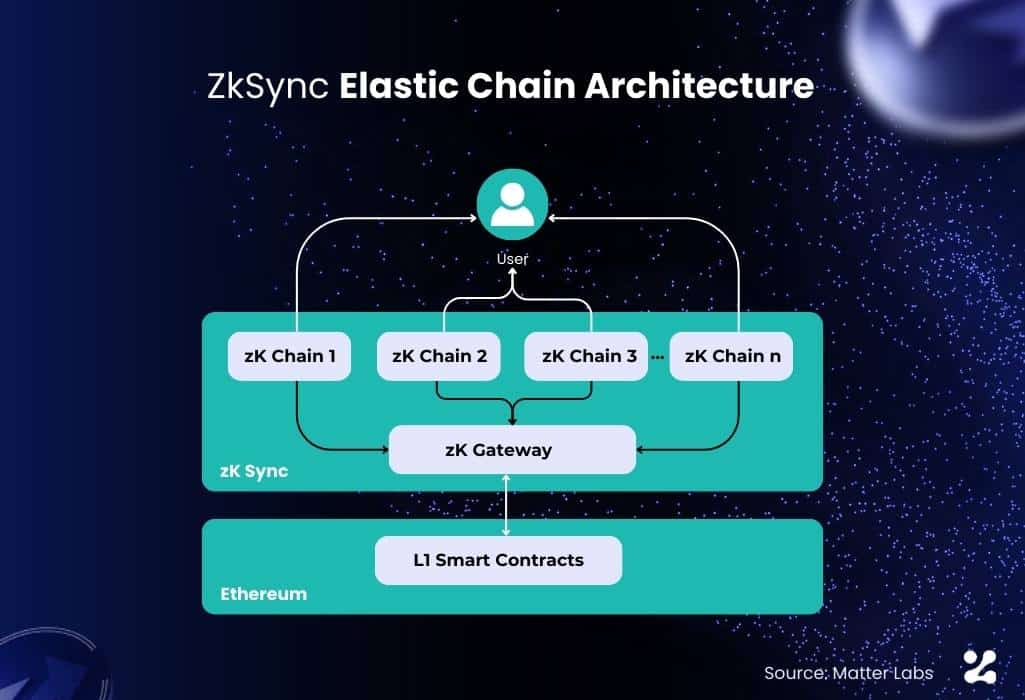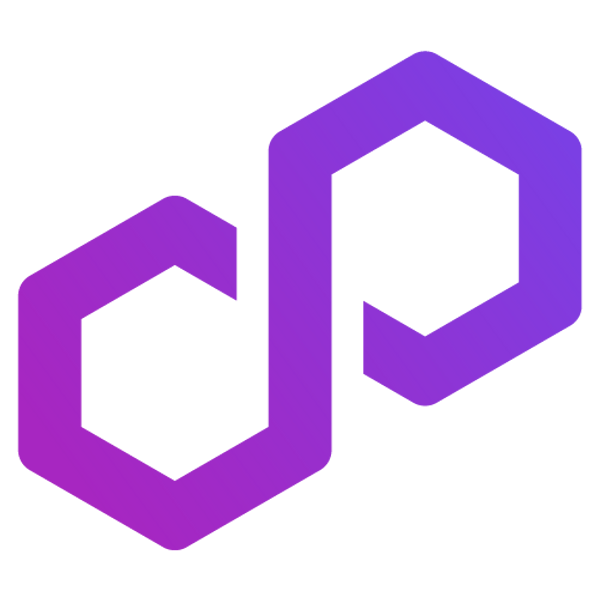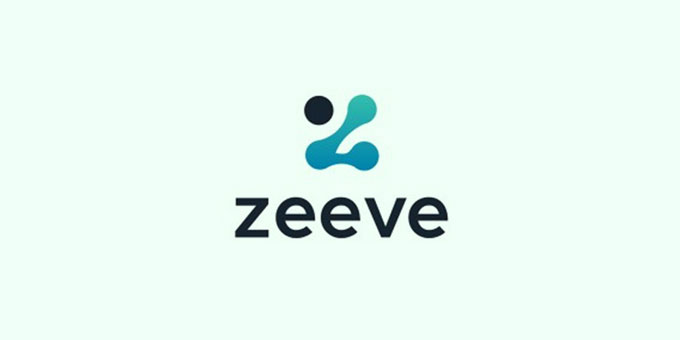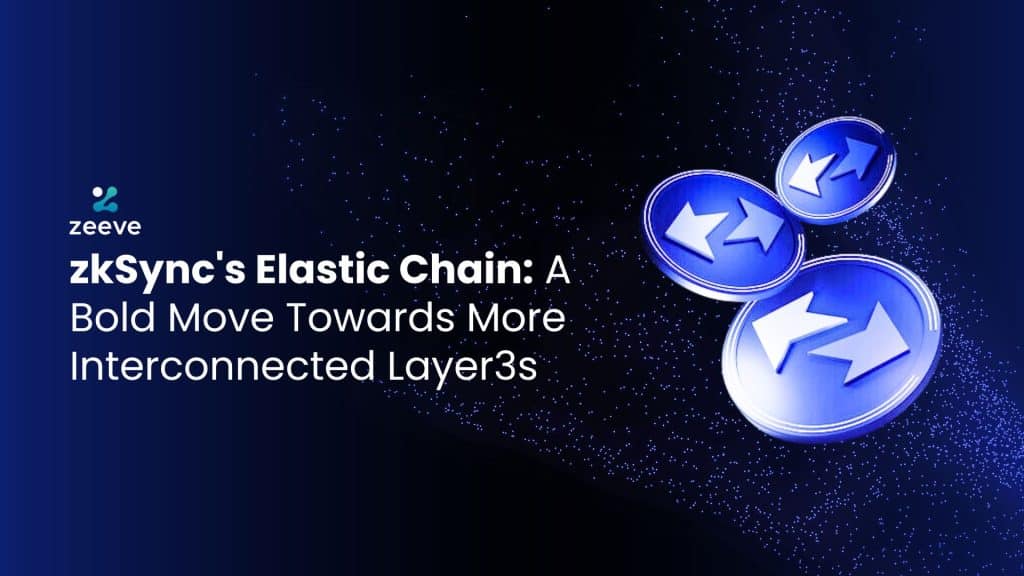For most of today’s blockchains, a common challenge is ‘state and liquidity fragmentation’, which eventually leads to bad UX and scalability limitations. To provide a solution, ZkSync has designed an ‘Elastic Chain’ that powers a more interconnected ecosystem of independent Zk Chains. Matter Labs, the development & research team behind the ZkSync protocol has referred to this innovative elastic chain concept as one of the bold moves that they outlined in the zkSync 3.0 roadmap.
As you may already know, ‘Elastic Chain’ is a very new addition to the zkSync protocol. Hence, there are confusions around this concept or lack of awareness can be seen among L2/L3 communities. This article allows you to dive deeper and get in-depth information about the zkSync Elastic chain.
A snapshot of ZkSync 3.0 Roadmap
The ZKsync team has unveiled a significant aspect of their zkSync 3.0 roadmap, transitioning the ZKsync to an innovative “elastic chain” network with the recent v24 update. This is similar to the zkSync 2.0 roadmap that brought along the concept of zkSync Era chains and a lot of other exciting upgrades. Basically, the goal here is to make the whole zkSync ecosystem more interconnected, secure, and scalable. For that, ZKsync has unveiled a list of significant upgrades in addition to the Elastic Chain structure. Let’s quickly check them out:
- Lowering down the transactions fee– with v24 upgrade, zkSync aims to support 16 blobs per Layer1 batch, which is currently 6. The more blobs are supported in a single batch, the cheaper transactions can be offered.
- Getting zkSync Bridgehub ready– zkSync Bridgehub is getting prepared to offer a solid interoperability foundation for ZK Stack chains, allowing them to share liquidity and users seamlessly.
- Addition of new precompiles– zkSync will now support new precompiles for P256Verify and EVM curve operations. P256Verify will allow users to sign transactions in a secure and user-friendly manner based on hardware security, but not the traditional 24-words seed phrases.
- New pricing for some smart contracts– zkSync plans to offer cheaper transactions for the smart contracts that are well written and thoroughly optimized.
- Gasless .transfer/.send calls– Partial support for gasless transactions made for .transfer/.send functions.
- EVM bytecode support- zkSync team may soon upgrade support for contract execution through EVM bytecode instead of EraVM bytecode, further simplifying the operations.
- Validum mode, custom DA, and more- v24 upgrade has been finalized for the support of validium node, custom DA, as well as custom base tokens on all the zkStack chains and thus, these features will be available soon.
Now, let’s understand zkSync’s Elastic Chain concept
As the name suggests, Elastic chain powers an infinitely extensible ecosystem of standalone ZKSync Layer2 and Layer3 chains– be it rollups, validiums, or volitions. You can think of the Elastic chain somewhat similar concept to Polygon’s Aggregation Layer because that is too designed to bring uniformity across chains via cryptographic proofs.

While the purpose may be the same, the Elastic chain at ZkSync works differently with its specific components and functions. With Elastic chain, ZkSync now6 aims to offer a seamlessly interoperable rollup network secured through math for a uniformed plus intuitive UX. Simply stated, Elastic chain will work to unite multiple Zkstack chains in the backend, but this won’t impact the user experience, they will still have the same experience of using a standalone chain.
Key components of zkSync Elastic chain
The Elastic chain architecture is based on three core components (according to Matter Labs); ‘Native Token Vault’, ‘Shared router, and Z Gateway. These components are explained below:
Native token vault and shared router- Both the native token and shared router refers to smart contracts running on Ethereum that are accountable to ensure seamless management of the network’s state while handling all the chain registrations.
ZK Gateway- Another important Elastic chain component is ZK Gateway acts as a middleware to enable connectivity between Zksync chains and Ethereum, facilitating end-to-end interoperability. With that, ZK Gateway allows different ZKSync L2s and L3s to efficiently interact and engage in transactional activities while inheriting robust security from Ethereum Layer1.
These components together ensure that all the ZkSync chains can communicate with each other in a unified ecosystem, but at the same time, they don’t lose the key properties that make zkSync chains so powerful.
How Elastic chain will benefit the ZkSync Ecosystem?
Elastic chain brings a range of benefits for the Zk Sync ecosystem, including the following main offerings:
Interconnected, expandable network:
Forming a network of interconnected and expandable zkSync chains is the main goal behind the Elastic chain innovation, which the zkSync protocol is achieving well. All the chains- including high-performance rollups and validiums can now united across an elastic network and more Zk chains can be added as required to expand the network’s capability to handle higher transaction volume without the need for complex hardware requirements for their verification.
Shared liquidity via trustless communication:
Zk Chains powered within Elastic chain network offer native and completely frictionless interoperability enabled in a consistent plus easy-to-use way. This lays down the foundation for trustless communication and transferability of assets leveraging unified liquidity and a full range of zkSync ecosystem users. Despite such a complex operation, Elastic chain claims that there will not be any security challenges as the protocol entirely relies on cryptographic proofs to maintain battle-tested security.
Unmatched UX:
With Elastic chain, ZKsync supports automatic creation of modular smart contracts like for token vault and shared router, thereby enabling a customizable and highly engaging UX. Additionally, onboarding for zkSync users is now simplified with one-tap approach enabled through FaceID and passkeys– an excellent alternative to complex seed phrases that are prone to security risks and hacking.
Who all are building with Elastic chains?
As we see, ZKSync Elastic chain is quite a new concept and hence the number of projects are limited as of now. However, the zkSync team recently revealed more than a dozen of ZKSync chains launching officially on Elastic chains and 20+ are expected to go live by this year’s end. Here’s tweet:
=== 🧵 ZK Chains Launching On The Elastic Chain – Powered by @ZKsync #ZKStack 🚀 ===
— Lumi (∎, ∆) (@zkLumi) June 28, 2024
Want to learn more about ZK chains launching on #ZKsync Elastic Chain? Over 20 are expected to by live by end of year.
Here are threads on some of our current public partners 🧵👇 https://t.co/6BPmFgMnIj
For example, Zero Network has announced their testnet live just last month, aiming to offer a optimized and seamless DeFi experience for their users and thereby build a mass market. Besides the main benefits of zkSync Elastic chain like inter-chain interoperability, EVM-compatibility, and top-notch security, Zero Network strives mainly to unlock enchanting on-chain experience with sponsored or gasless transactions enabled through native account abstraction (AA). Instead of imposing gas fees, Zero will use any token to cover the network cost.
Then, there is Memento blockchain– a network dedicated for specialized finance and tech-based blockchain services. Memento is building a Layer2 hyperchain to provide a secure, customizable, and privacy-focused environment for institutional solutions and dApps to thrive endlessly. Their L2 is built in collaboration with Zeeve RaaS (rollups-as-a-service) stack, which their CTO–Fabrizio Audisio confirmed in his tweet.
The partnership with @0xZeeve is an important step in our journey to build the finance of tomorrow. Once the Memento hyperchain will be ready, DOMANI Protocol will be the cornerstone for Digital Fund Management. https://t.co/KVBxD0YHBA
— Fabrizio Audisio (@FabAudisio) May 20, 2024
Similarly, PlayFi gaming has introduced PlayChain– a ultra-fast, innovative Layer2 ZKSync chain that has joined the Elastic chain ecosystem for extremely fast transactions, no virtual fees, and unified liquidity. Another good examples are Cronos zkEVM and Lens Network that have come up with unique ZK Stack chains powered with uninterrupted flow of users & liquidity, 100% decentralization, real sustainable gas fees, zero security compromise, and other next-level benefits.
Other names in this list are Quark ID (digital identity network), Noodle (digital trust network), ZK Candy (gaming hyperchain), Space and time (decentralized data warehouse), GRVT Exchange (hybrid exchange), Trala (web3 gaming platform), and Zerion (web3 social wallet) that have announced to join zkSync Elastic chain network to leverage its unparalleled web3 features.
Tap into zkSync’s Elastic Chain ecosystem with Zeeve RaaS
Like we discussed, zkSync’s Elastic chain concept is new and is gradually adding new chains to the unified ecosystem. 20+ projects are already expected to join their interconnected ecosystem this year, but the actual growth can be surprising. And, if you are planning to launch your zkSync L2 or L2, Zeeve RaaS is ready to offer benefits like low-cost deployment and rapid launch. Each heavy listing– whether its launch, 3rd party service integration, or infrastructure management, will be handled by Zeeve RaaS platform and our proactive team so that you can focus on other critical aspects.
Also, you can set up a fully-functional zkSync hyperchain local testnet with our 1-click sandbox tool for absolutely no charges. Further, you will get hands-on assistance for public testnet/ mainnet deployment and on-going maintenance. Zeeve RaaS has added support for 40+ 3rd party integrations and it natively offers all the essential rollup components like block explorers, testnet faucets, and wallets to launch a modular zkSync chain.
For more information about Zeeve RaaS, connect with us. You also have the ease to send your queries via mail or schedule one-on-one calls for a detailed discussion.






















